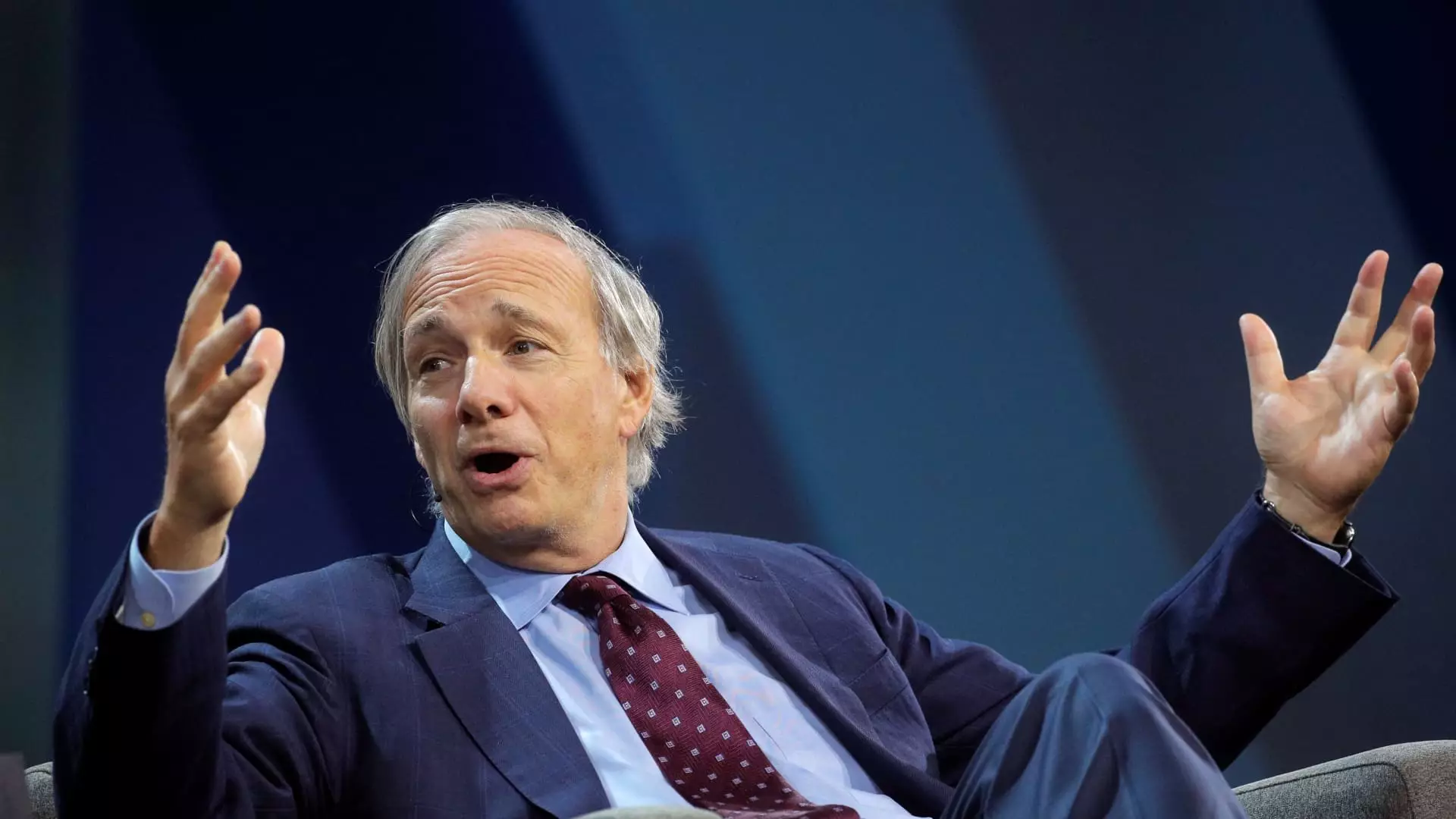As economic conditions fluctuate, the decisions made by the U.S. Federal Reserve often reverberate throughout the global markets. Recently, the Federal Reserve executed its first interest rate cut since the onset of the COVID-19 pandemic, reducing the federal funds rate by 50 basis points to a range of 4.75% to 5%. This pivotal move is not merely a number on a chart; it signals the Fed’s ongoing response to a tumultuous economic environment characterized by unprecedented levels of government debt. Renowned investor Ray Dalio, the founder of Bridgewater Associates, has boldly remarked on the persistent debt challenges that the U.S. economy grapples with amid these changing rates.
The implications of interest rate changes are far-reaching. Lower rates typically ease borrowing costs for consumers and businesses, influencing everything from mortgages to credit card rates. However, Dalio warns that while such measures are designed to stimulate the economy, they come with a complex balancing act. The Fed must walk the fine line between benefiting creditors by maintaining rates at a level that encourages lending and not placing undue burdens on those indebted. This balancing act becomes even more vital when considered against the backdrop of soaring national debts and budget deficits.
The scale of U.S. debt is alarming. The Treasury Department has reported that interest payments alone have exceeded $1 trillion this year against a staggering national debt figure that hovers around $35.3 trillion. This mounting debt correlates with a ballooning budget deficit that is edging towards $2 trillion for the year—a financial landscape that raises critical concerns about sustainability and fiscal responsibility.
Dalio points to this issue as one of five significant forces shaping the global economy. Reflecting on his concerns about the immense debt generated by government actions, he suggests that the levels of debt monetized by central banks today are unprecedented in his lifetime. The rush to amass debt during the pandemic was largely driven by governments seeking to mitigate the immediate economic fallout through stimulus packages. However, this response has created a precarious situation where debt dynamics are now imperative to understand.
When prompted about the possible emergence of credit events, Dalio expresses a position that does not align with panic. Instead, he anticipates a depreciation of debt value influenced by artificially low real interest rates, rendering inadequate compensation for creditors. While he acknowledges a semblance of equilibrium in the current economic environment, he underscores the enormity of debt that must eventually be addressed, including the necessity for governments to roll over contracts and create new debt.
As the political landscape continues to evolve, Dalio voices concerns that neither major political figure—former President Donald Trump nor Vice President Kamala Harris—is likely to prioritize debt sustainability. This skepticism towards effective management of fiscal pressures suggests that the path forward could be increasingly characterized by a strategy aimed at monetizing existing debts, drawing parallels with Japan’s historical approach to low-interest rates.
Dalio’s insights evoke historical precedents, particularly the situation in Japan, where the central bank has adhered to a regime of low or negative interest rates. Japan’s aggressive monetary easing has succeeded in keeping interest rates down, but it has substantially weakened the value of the yen and government bonds in the process. As a reflection of this, Dalio references that the value of Japanese bonds has plummeted significantly—down by nearly 90%—making a clear case that a similar path of prolonged low rates in the U.S. could lead to significant long-term ramifications.
In the event there are not enough market participants willing to absorb the burgeoning supply of debt, Dalio contemplates how the Fed may need to intervene. Such a scenario raises alarms about potential economic disturbances, as market interventions might highlight deeper vulnerabilities in economic fundamentals.
In an environment where oversupply of debt persists, questions loom regarding payment methods and the broader implications for currency values. Dalio’s call for attention to this dynamic suggests that the current trajectory could lead to market conditions resembling those of the 1970s or the tumultuous period from 1930-1945. The complexities of interest rate decisions, U.S. debt burdens, and evolving political factors embroil investors and policymakers in a potentially precarious economic scenario, making it essential for all stakeholders to monitor developments closely for insights into future trends.


Leave a Reply